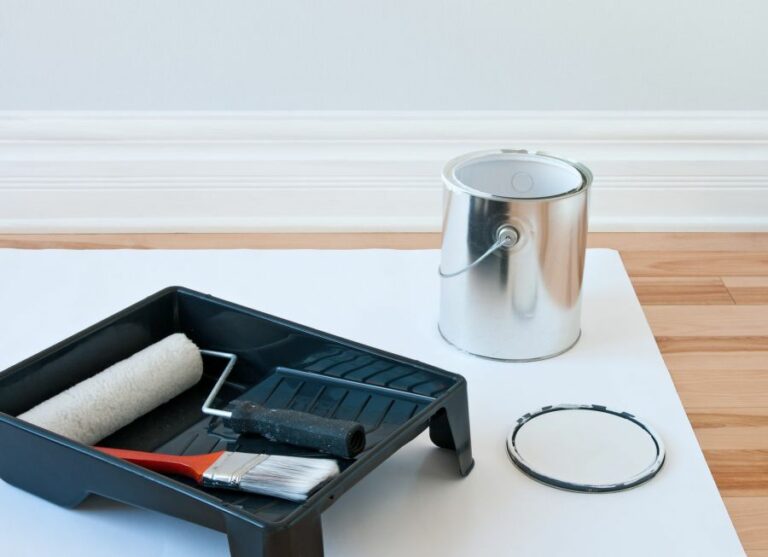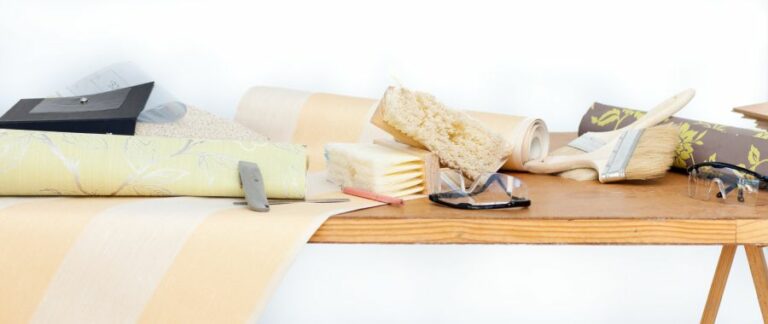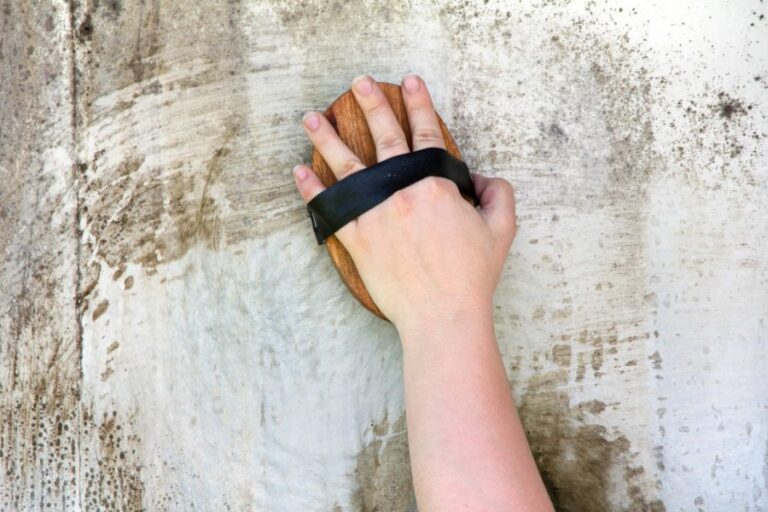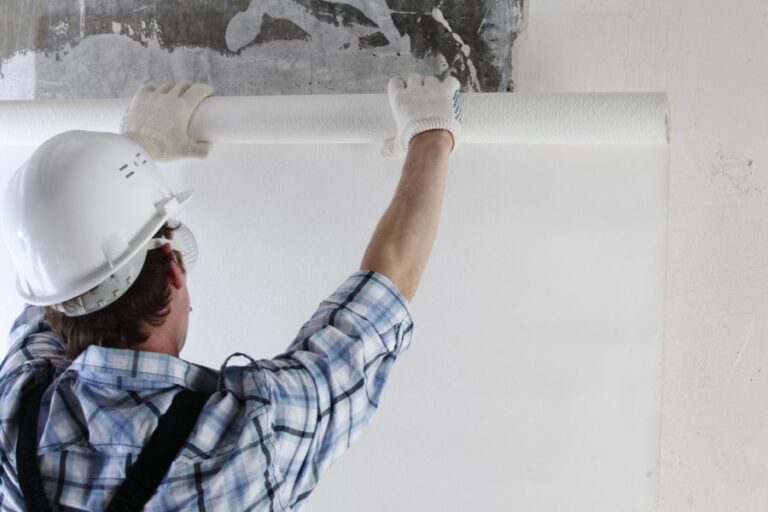How To Clean Surfaces With Wire Brushes, What Pros Say
Are you tired of struggling to clean stubborn dirt and rust from surfaces, often ending up with subpar results? Worry no more, as we have the perfect solution for you. In this discussion, we’ll explore how to clean surfaces with wire brushes effectively and efficiently, leaving you with clean and restored surfaces in no time.
How to clean surfaces with wire brushes:
First, identify the appropriate brush type (brass, stainless steel, or carbon steel) for the cleaned material to clean surfaces with wire brushes. Prepare the surface by removing loose debris and wearing protective gear. Apply consistent pressure and appropriate cleaning techniques depending on the surface type (wood, metal, or paint removal). Finally, clean and store the wire brush properly for future use.

Unlock the potential of your wire brushes with our collection of tips and tricks for flawless surface cleaning. Bid farewell to stubborn grime and dirt as you master wire brush techniques for various materials. There’s more where this came from. Read on to become a cleaning pro!
Contents
- 1 Effective Surface Cleaning with Wire Brushes
- 2 Versatile Cleaning Applications of Wire Brushes
- 2.1 • Cleaning Gardening Tools and Outdoor Equipment
- 2.2 • Removing Paint, Rust, and Corrosion
- 2.3 • Cleaning Household Surfaces
- 2.4 • Preparing Metal Surfaces for Welding
- 2.5 • Cleaning Reusable Water Bottles
- 2.6 • Types of Wire Brushes
- 2.7 • Choosing the Right Wire Brush
- 2.8 • Wire Brush Safety Considerations
- 3 Eliminating Dirt Effortlessly with Wire Brushes
- 4 Simplifying Removal Tasks Using Wire Brushes
- 5 Prioritizing Wire Brush Safety Measures
Effective Surface Cleaning with Wire Brushes
Wire brushes are a versatile and convenient tool that can be used for various tasks, including cleaning surfaces.
• Wire Brushes: Types and Materials
To ensure efficient cleaning without causing damage to the surfaces, it is essential to familiarize yourself with the various types of wire brushes and the materials from which they are made.
– Brass Wire Brushes
Brass wire brushes are suitable for cleaning delicate surfaces such as wood, brass, and copper. They help to remove any loose debris and dirt without scratching these softer materials.
– Stainless Steel Wire Brushes
These wire brushes are ideal for cleaning stainless steel, aluminum, and other metals prone to rusting or staining. Stainless steel brushes can easily remove corrosion, grime, and other build-ups without damaging the surface.
– Carbon Steel Wire Brushes
Carbon steel wire brushes are designed for heavy-duty cleaning tasks, such as removing paint, rust, and scale from iron and steel surfaces. However, they can be abrasive, so avoid using them on sensitive materials.
The American Welding Society has a comprehensive guide on wire brushes and their applications, which can be helpful if you need more information on the subject.
• Preparing the Surface for Wire Brush Cleaning
Before you begin cleaning with a wire brush, here are a few preliminary steps that can ensure effective results:
- Remove Loose Debris: Sweep or vacuum the surface to remove loose dirt, dust, and debris.
- Determine the Suitable Wire Brush Type: Identify the right wire brush for the surface material to ensure efficient cleaning without harming the surface.
- Wear Protective Gear: Wear safety goggles and gloves to protect your eyes and hands from dust, debris, or any sharp edges.
• Cleaning Techniques with Wire Brushes
Here are some cleaning techniques and tips on how to use wire brushes for various surfaces:
– Wood Surfaces
- Choose the Right Brush: Use a brass wire brush to prevent damaging the wood surface.
- Test on a Hidden Area: Before starting to clean the entire surface, test the wire brush on a small hidden area to make sure it doesn’t scratch the wood.
- Maintain Consistent Pressure: While cleaning, apply consistent pressure and work in the direction of the wood grain to avoid leaving scratches.
- Clean Up Residue: After cleaning, use a clean, damp cloth to wipe away any residue and let the surface dry.
– Metal Surfaces
- Select the Appropriate Wire Brush: Choose a stainless steel wire brush for rust-prone metals and a carbon steel brush for heavy-duty cleaning on iron and steel.
- Test Before Proceeding: Conduct a test on a small inconspicuous area before using the wire brush on larger portions of the surface.
- Work Methodically: For large surfaces, work in small sections and keep track of areas that have been cleaned to ensure evenness.
- Take Care of Edges: Clean flat surfaces with broad, sweeping strokes, moving the brush back and forth while focusing on the edges and corners with short, quick strokes.
– Paint Removal
- Select the Right Wire Brush: Use a carbon steel wire brush to effectively remove paint from iron and steel surfaces.
- Test on a Hidden Area: Always test the wire brush on a small, hidden area to ensure that it doesn’t cause any damage to the underlying surface.
- Apply a Paint Stripper: Apply a paint stripper to soften the paint, making it easier to remove with the wire brush.
- Scrub in One Direction: To prevent scratches, scrub the surface in one direction, moving the wire brush back and forth.
- Clean Up: After the paint is removed, wipe away any residue using a clean cloth.
• Cleaning Up and Storing Wire Brushes
After using a wire brush, it is essential to clean and store it properly for future use. Follow these steps:
- Remove Debris: Tap the wire brush on a solid surface or use a soft-bristle brush to remove dirt and debris.
- Clean with Soapy Water: Fill a container with warm, soapy water and dip the wire brush into it. Gently scrub the bristles using a soft brush or cloth.
- Rinse: Rinse the wire brush thoroughly under running water to remove all soap and residue.
- Dry: Shake the brush to remove excess water and leave it to air dry completely before storing it.
In conclusion, wire brushes are an indispensable tool for cleaning various surfaces. By using the appropriate wire brush type, the proper techniques, and taking the necessary precautions, you can effortlessly clean and maintain surfaces without causing any damage.
Step | Description |
|---|---|
1 | Choose the appropriate wire brush for the surface type and material |
2 | Put on safety gloves and goggles to protect your hands and eyes while cleaning |
3 | Use a softer wire brush for delicate surfaces, and a more rigid one for tough surfaces |
4 | Hold the brush firmly and scrub in a repetitive motion, applying consistent pressure |
5 | Focus on areas with heavy deposits or rust, giving them a more thorough cleaning |
6 | Continue the cleaning process until the surface is free from dirt, grime, or rust |
7 | Wipe down the surface with a clean damp cloth to remove any debris and dust |
8 | Allow the surface to dry completely before applying any paint or additional treatments |
Versatile Cleaning Applications of Wire Brushes
A wire brush is a versatile and essential cleaning tool in many industries and households.
• Cleaning Gardening Tools and Outdoor Equipment
Gardening tools such as shovels, spades, and shears accumulate dirt, rust, and sap during usage, which affects their longevity and performance.
A wire brush is perfect for removing the dried dirt and rust from the tools, as it can reach tight areas and loosen the debris effectively.
A stainless steel wire brush or a brass wire brush is recommended for cleaning gardening tools, as they are resistant to rust and corrosion.
Cleaning outdoor equipment like barbeques, grills, and patio furniture is another excellent use for wire brushes. For grills and barbeques, use a brass or stainless steel brush with stiff bristles to effectively remove burnt-on food particles and grease.
For rusted patio furniture, a wire brush with a plastic handle is recommended to protect your hands from metal splinters.
• Removing Paint, Rust, and Corrosion
Wire brushes are highly effective at removing paint, rust, or corrosion on various surfaces like metal, wood, and concrete.
For delicate surfaces like wood or brick, use a brass wire brush that has soft bristles, which will not cause scratches or damage to the surface. For heavy-duty cleaning of metals, a steel wire brush with stiff bristles is recommended.
For cleaning automotive parts and machines in detail, consider using a small wire brush or a wire brush attachment on a power tool to reach tight spots and corners.
For the safe disposal of rust and paint particles, refer to the guidelines given by the Environmental Protection Agency.
• Cleaning Household Surfaces
A wire brush can also be used to clean household surfaces like tile flooring, ovens, and fireplaces. In the case of tile flooring, use a brass wire brush with soft bristles to remove dirt and grime from the grout lines. This will make the tiles look new and clean without causing any damage.
For ovens, use a small steel wire brush or brass wire brush to remove grease and burnt-on food particles. For cleaning brick or stone fireplaces, a brass wire brush is recommended to avoid damage to the delicate surface while still achieving satisfactory cleaning results.
• Preparing Metal Surfaces for Welding
Wire brushes are crucial in preparing metal surfaces for welding by removing contaminants, rust, and scales which could lead to faulty welds.
Use a stainless steel wire brush to clean stainless steel, aluminum, or other non-ferrous metals, as they will not leave iron particles on the surface. For cleaning carbon steel or steel alloys, a carbon steel brush is suggested.
• Cleaning Reusable Water Bottles
A wire brush with a long and narrow bristle head is the perfect tool for cleaning reusable water bottles, as it can reach deep inside the bottle and clean the corners and crevices effectively. Use a stainless steel or nylon wire brush, depending on the bottle material, to prevent scratches or damage.
• Types of Wire Brushes
Various wire brushes are available in the market, and it is essential to choose the right one for the task at hand:
- Stainless Steel Wire Brushes: Suitable for cleaning metals, stainless steel, and aluminum surfaces, as well as grills and barbecues.
- Carbon Steel Wire Brushes: Recommended for heavy-duty cleaning of metals, especially carbon steel and steel alloys.
- Brass Wire Brushes: Ideal for delicate surface cleaning like wood, bricks, and grout lines, and for removing paint and corrosion.
- Nylon Wire Brushes: Suitable for light cleaning tasks on delicate surfaces like glass and plastic without scratching them.
• Choosing the Right Wire Brush
While selecting a wire brush, consider factors like the surface material, the type and size of debris to be removed, and the desired outcome.
Always choose a brush with a comfortable grip and the right size for the cleaning task. Keep in mind that using the wrong wire brush may damage the surface or fail to clean it effectively.
• Wire Brush Safety Considerations
Using a wire brush involves certain risks, like metal splinters, sharp edges, and airborne debris. The following safety measures should be adhered to:
- Wear gloves to protect your hands from metal splinters.
- Wear safety goggles to protect your eyes from debris.
- Avoid applying excessive force while brushing, as it may cause the bristles to break and snap.
- Regularly inspect the brush for broken or loose bristles and replace it when necessary.
In conclusion, wire brushes are essential cleaning tools for various surfaces and objects. By selecting the appropriate wire brush and following safety measures, you can effectively clean and maintain your tools and household surfaces with ease.
Eliminating Dirt Effortlessly with Wire Brushes
• The Multi-Purpose Wire Brush
Wire brushes are a versatile and essential tool for various tasks across industries. They are most commonly used in metalwork, woodworking, and automotive applications to remove dirt, rust, paint, and other surface contaminants. This article will dive into the effectiveness of a wire brush for the removal of dirt, the different types of wire brushes available, and the techniques and best practices for its usage.
• Types of Wire Brushes
There are several types of wire brushes, each designed for specific purposes and materials. The three most common types are:
1. Brass Wire Brushes
Brass wire brushes are non-sparking, making them ideal for use in flammable or explosive environments. They are less abrasive than steel wire brushes and work great on softer materials, such as brass, copper, and aluminum. To learn more about brass wire brushes, visit this informative page.
2. Steel Wire Brushes
Steel wire brushes are the most versatile and most widely used type of wire brush. They come in either carbon steel or stainless steel and are ideal for removing rust, scale, and paint from ferrous metals (iron and steel). They are also excellent for removing dirt from rough surfaces.
3. Nylon Wire Brushes
Nylon wire brushes are less aggressive than metal wire brushes and are suitable for use on sensitive materials such as plastic, glass, and ceramics. They are used for mild cleaning purposes, such as removing dirt from delicate surfaces.
• Effectiveness in Dirt Removal
A wire brush can effectively remove dirt from various surfaces, including metal, wood, and concrete. It is especially adept at cleaning rough surfaces where dirt can accumulate in the crevices.
The bristles on a wire brush are stiff and strong, enabling the user to apply significant force to loosen and remove the dirt.
However, it is important to note that the effectiveness of a wire brush for removing dirt highly depends on the dirt type (dry, wet, or caked) and the material it is stuck to.
In some cases, a wire brush may not be the best option – for example, delicate or sensitive surfaces that could be damaged or scratched by the wire bristles.
• Techniques for Using a Wire Brush
To maximize the effectiveness of a wire brush for dirt removal, the right technique is crucial. Here are some general tips:
1. Choose the Right Wire Brush
Select the appropriate wire brush for the task at hand, considering the material and dirt type. Brass or nylon wire brushes are suitable for delicate surfaces, while steel wire brushes are perfect for heavy-duty jobs.
2. Brush in a Uniform Direction
When using a wire brush, work in a uniform direction rather than randomly scrubbing back and forth. Consistent direction helps to produce a more even result and minimizes the risk of damaging the surface.
3. Apply Pressure as Needed
Apply the necessary pressure based on the level of dirt and the material being cleaned. Too much force can cause damage, especially to delicate surfaces, while too little force can render the cleaning process ineffective.
4. Clean the Brush Regularly
Keep the wire brush clean to maintain its effectiveness. Dirt and debris can accumulate between the bristles over time, reducing the brush’s ability to clean. Cleaning the brush regularly ensures optimum performance.
• Recommendations and Considerations
As an experienced user of wire brushes, I would recommend the following:
- Wear Personal Protective Equipment (PPE): Using a wire brush can produce flying debris, so it’s essential to wear safety goggles and gloves to protect your eyes and hands.
- Use Additional Cleaning Agents: Depending on the material and type of dirt, combining the wire brush action with a cleaning agent can improve the effectiveness of dirt removal.
- Consider Alternatives for Sensitive Surfaces: While wire brushes can remove dirt, they might not always be the best option. For delicate surfaces, consider using a soft-bristle brush or a microfiber cloth.
In conclusion, a wire brush can effectively remove dirt from various surfaces. However, it is crucial to select the right wire brush for the task, use appropriate techniques, and take necessary precautions.
Simplifying Removal Tasks Using Wire Brushes
Wire brushes have long been a popular tool for their ability to remove various types of stubborn material with relative ease.
• Understanding the Basics of Wire Brushes
Wire brushes are available in various shapes, sizes, and materials to cater to different applications. They are most commonly constructed from steel, brass, or stainless steel wire bristles, attached to a sturdy handle.
– Steel Wire Brushes
Steel wire brushes are the most common and widely used type of wire brush. They are recommended for heavy-duty applications and are especially effective at removing rust, paint, and varnish from metal surfaces.
– Brass Wire Brushes
Brass wire brushes are comparatively softer than their steel counterparts, making them ideal for use on more delicate materials, such as brass, copper, and aluminum. These brushes effectively remove dirt, grime, and light corrosion without damaging the underlying surface.
– Stainless Steel Wire Brushes
Stainless steel wire brushes are a corrosion-resistant option suitable for both light and heavy-duty cleaning tasks. They are ideal for use on stainless steel products and other materials that may be sensitive to contamination with carbon steel particles.
• Best Practices for Using Wire Brushes
To get the most out of your wire brush, it is essential to follow some best practices. Following these recommendations will help you achieve optimal results and prolong the life of your brush.
– Choose the Right Brush for the Job
Selecting the appropriate wire brush for your task is critical to achieving the desired results. As mentioned earlier, pick a wire brush based on the type of material you are working on and the level of aggressiveness required.
– Keep a Firm Grip on the Handle
Hold the brush handle firmly, and apply steady pressure while cleaning your material. A secure grip will ensure consistent performance and prevent the brush from slipping.
– Use Proper Technique
When using a wire brush, move in a back-and-forth motion while maintaining consistent contact with the surface being cleaned. This technique will help to remove the material effectively and evenly.
– Clean Your Wire Brush Regularly
To maintain the effectiveness of your wire brush and prolong its life, clean the bristles regularly. You can tap the brush against a hard surface to remove loose debris or use a secondary brush to clean the bristles thoroughly.
• Safety Precautions When Using Wire Brushes
Wire brushes can cause injury if not used correctly. Following these safety precautions will help to minimize the risk of accidents:
- Wear Protective Gear: Always wear safety glasses and gloves to protect your eyes and hands from flying debris.
- Inspect Your Brush: Before each use, check your brush for loose or damaged bristles. Replace the brush if it is worn or damaged.
- Secure Your Material: Ensure the object you are cleaning is securely fastened in place to prevent it from moving during the cleaning process.
• The Limitations of Wire Brushes
While wire brushes are an effective tool for removing stubborn material, they are not without their limitations. The use of wire brushes on softer materials, such as wood or plastic, can cause damage to the surface.
Additionally, they are not suitable for use in tight spaces or on delicate items, which may be easily scratched or marred by abrasive bristles.
In such situations, consider utilizing alternative cleaning tools like plastic brushes, nylon scrubbing pads, or abrasive sponges, which can achieve similar effects without causing damage.
• In Conclusion
Wire brushes are a versatile and efficient tool for removing various stubborn materials from different surfaces. One can easily achieve optimal results by understanding their types, following best practices, and adhering to safety precautions.
While wire brushes may not be suitable for every situation, their effectiveness and ease of use make them indispensable for many applications.
Prioritizing Wire Brush Safety Measures
Wire brushes are commonly used in various industries and applications such as welding, metal fabrication, and cleaning tasks. While these versatile tools can be incredibly useful, it is essential to follow safety precautions to avoid injuries and ensure optimal performance.
• Choosing the Right Wire Brush
Selecting the appropriate wire brush for your specific task is the first step in ensuring safety and effectiveness. There are various types of wire brushes, such as hand brushes, wheel brushes, and cup brushes. Each type has its specific applications and should be chosen accordingly.
– Material Safety
Before choosing the wire brush, consider the material the brush is made from. Common types of wire materials include steel, stainless steel, and brass. The material used can significantly impact the performance and safety of the wire brush.
For instance, using a steel wire brush on stainless steel can cause contamination, leading to surface rust and corrosion. In such cases, using a stainless steel wire brush is the best option to avoid surface contamination.
– Matching Brush Speed to the Task
It is also crucial to select a wire brush designed for the speed at which you will be working. Power tools, such as grinders and drills, can operate at different RPMs (revolutions per minute).
Always check the manufacturer’s specifications for the recommended RPM range of a wire brush and ensure it matches the speed of the tool you will be using.
• Wearing Proper Protective Equipment
Wearing appropriate personal protective equipment (PPE) is essential when using wire brushes to protect against potential injuries.
– Eye Protection
Whether you are using a hand-held or power-operated wire brush, there is always the risk of wire fragments or debris being released. Wearing safety glasses or goggles is crucial to protect your eyes from flying particles and debris.
– Hand Protection
Wearing gloves can protect your hands from injury, especially from sharp wire ends, when using a hand brush. Gloves should be the right size, allowing for proper grip and dexterity.
It is important to note that when working with power tools, loose-fitting gloves could pose a hazard, so choose gloves that are snug but still comfortable.
– Hearing Protection
Using a wire brush with power tools like angle grinders or drills can generate excessive noise. Prolonged exposure to high noise levels can cause hearing damage. Wearing earplugs or earmuffs can reduce the risk of hearing damage.
• Proper Technique and Tool Maintenance
Using the correct techniques and adequately maintaining your wire brushes will increase safety and optimize performance.
– Stay Within Safe Operating Speed
Always ensure the RPM of the power tool you are using is within the recommended range for your wire brush and never exceed the brush’s maximum RPM. Exceeding safe speeds can result in brush failure, causing the wire bristles to break off and potentially cause injury.
– Strike a Balance Between Pressure and Speed
Applying excessive pressure while using a wire brush can cause the tool to perform poorly, generate excessive heat, and potentially cause wire breakage.
Use enough pressure to maintain good contact with the work surface but not so much that you risk damaging the brush or workpiece. Adjusting the tool’s RPM or working at a slower pace can help prevent excessive pressure.
– Inspect and Replace Worn Brushes
Before each use, inspect the wire brush for signs of wear and tear. Check for broken or loose wires, damaged collars, or excessive wear on the bristles. Replace any worn or damaged brushes to ensure maximum efficiency and safety.
– Clean and Store Brushes Properly
Cleaning your wire brushes after use helps to prevent debris buildup, which can cause poor performance and increase the risk of injury.
Gently brushing the bristles with a soft nylon brush or using compressed air can remove dirt and debris. Store your brushes in a dry location away from moisture, which can cause corrosion and weaken the wires.
• In Conclusion
Following the safety precautions outlined here will help you securely and effectively use wire brushes in various applications.
Choose the right wire brush type, wear proper protective equipment, and practice good maintenance and technique habits to ensure a safe and successful experience using your wire brush tools.
By following these recommendations, you can minimize the risk of injury and maximize the productivity of your wire brush work.
Precaution | Description |
|---|---|
Wear safety goggles | Protect your eyes from flying debris and bristles that may come loose during use. |
Wear protective gloves | Protect your hands from potential cuts or punctures from the wire bristles. |
Inspect brush before use | Check for loose, damaged, or overly worn bristles before using the wire brush. |
Use correct speed | Follow the manufacturer’s recommended speed to prevent excessive wear on the wire brush. |
Properly secure workpiece | Ensure the workpiece is secured to prevent it from moving or slipping during brushing. |
Apply even pressure | Apply even and consistent pressure while using the wire brush to minimize the risk of wire breakage. |
Regular maintenance | Periodically clean and maintain the wire brush by removing debris or replacing worn bristles. |







